I don’t know where else to go with this idea. I’m not a physicist and it could be obviously wrong for some reason I’m missing, but it seems to me that there is a small chance that I’ve figured out how to remove one of the fundamental forces from our models of the universe; gravity, to be specific.
So we’ve all heard of dark energy, the force driving the accelerating expansion of the universe. Presumably it comes from somewhere, perhaps from every piece of matter in the universe, perhaps only stars, perhaps only black holes, but as long as it’s not all coming from a single source, it’s probably coming from something that is relatively common, and primarily found within galaxies. And if I magically came to KNOW that it does all come from one source, I would do very little beyond deleting a few arrows in my diagrams to change this post.
And as the Hubble deep field scans showed, there are A LOT of galaxies in any direction you look in (at least from Earth). So, countless galaxies in all directions are emitting dark matter, with tiny rays from each one hitting our galaxy, as well as galaxies in every other direction.
Of course our galaxy doesn’t have a plastic shell around it for dark energy to hit. It’s specific things in the galaxy that get hit by specific emissions of dark energy, just like it’s specific objects that emit those emissions.
Here are some galaxies. Beyond the ones shown, there are more and more in all directions for as far as anyone knows so far. Please note that nothing in any of these diagrams is drawn to scale.

Any one of them emits dark energy pretty uniformly in all directions, as it does with light.
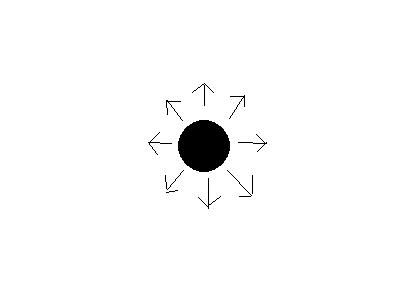
Given the sheer number of other galaxies off in all directions, the total dark energy hitting a galaxy would look something like this. The magnitude of the dark energy forces coming in from the rest of the universe ought to be a lot more than what our one little galaxy puts out.
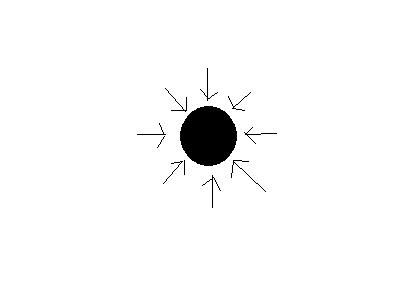
Now let’s look inside this galaxy, at a single solar system. Dark energy converges from all directions, as at the perimeter of the galaxy, since the galaxy is mostly empty space, and (I’m presuming) a more or less negligible amount is added from other objects within the galaxy.
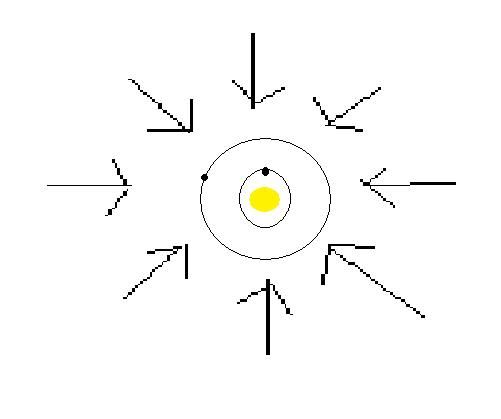
Now let’s consider a single planet within the solar system
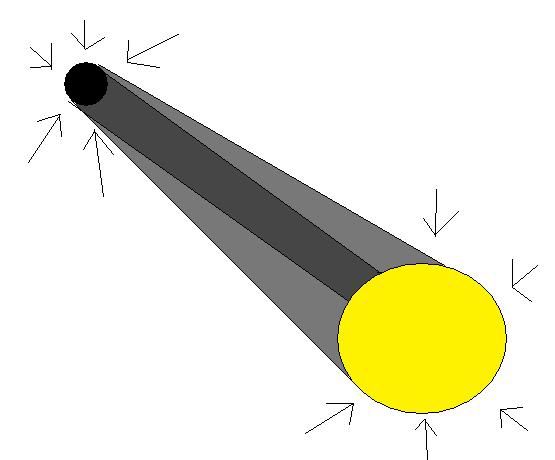
The sun casts a shadow in the dark energy field; some of the dark energy headed in the direction of our planet strikes the sun along the way and never makes it to the planet. To a lesser extent, the planet shields the sun as well. As the planet revolves around the sun, there is always a void in the otherwise all-pervasive dark energy field in the direction of the sun. As rudimentary as these diagrams are, you might as well just rotate your monitor if you really need a visual (keeping the screen on the same plane).
Each dark energy vector has an equal opposite cancelling it out, except in the shadow. Any other imbalance would be the same for the planet as it is for the star, and therefore would not alter their positions relative to each other. Even if it was all coming from one direction.
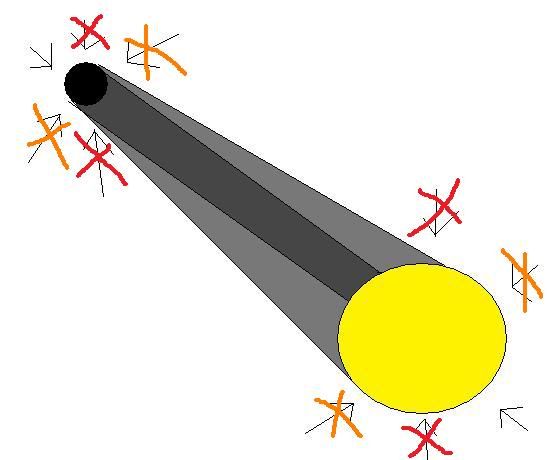
The planet always has one region that is only hit with the sun’s own dark energy emissions (if it has any), whereas all other sides are being hit with dark energy from all of the rest of the universe (in that direction), hence the illusion of gravity.
Similarly, a supermassive black hole at the center of a galaxy would cast a dark energy shadow on everything else in the galaxy, so the net push of all the dark energy vectors hitting a given star is toward the center of the galaxy, keeping it in orbit. This would be true of any given moment; the direction of the greatest push rotates around, but it is always toward the black hole.

The planets around the star are shielded by the black hole roughly the same amount as the star is, but they are much more strongly affected by the shielding from the star than the black hole is.
Now, consider 2 galaxies:
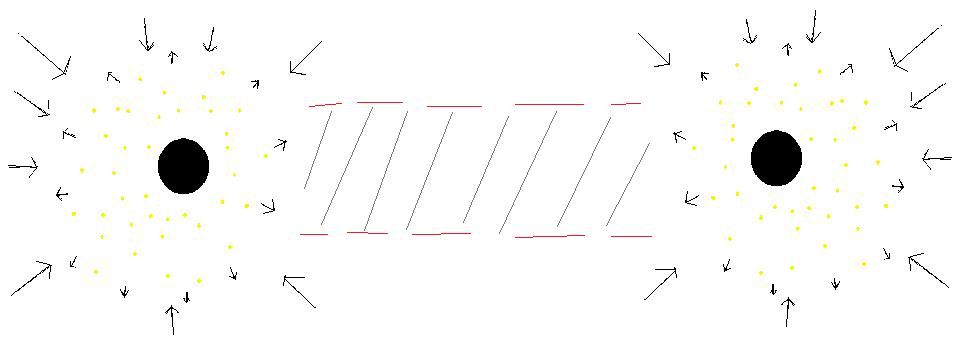
Each emits a little bit of dark energy of its own, and is mostly empty space so that much of the dark energy from other galaxies beyond it passes right through. I'm thinking no one object within a galaxy is emitting more dark energy than it shields its neighbors from. There is some galaxy-to-galaxy shielding, but it is very weak due to the amount of dark energy that can pass right through without hitting anything. This would be consistent with the galaxies spreading out from each other without being ripped apart by the force causing them to spread. So, between galaxies, there is a repulsive effect, while within galaxies, there is primarily an effect of shielding from the all-pervasive repulsion from dark energy.